TL;DR
AI chatbots in 2025 are powered by advanced technologies like NLP, machine learning, and large language models that help them understand, process, and respond to human language in real time. From basic rule-based bots to fully autonomous AI agents, they now handle support, sales, voice conversations, and task automation across industries. This guide breaks down how they work, what powers them, and how businesses use them to improve service, efficiency, and customer engagement step-by-step and jargon-free.
Introduction: The Rise of AI Chatbots
AI chatbots, also known as intelligent virtual assistants, are software applications designed to simulate human-like conversations. They can interpret user queries, understand context, and deliver instant, relevant responses all without human intervention.
Once considered a novelty, AI chatbots are now a business essential in 2025. They are everywhere, from websites and mobile apps to WhatsApp and customer service lines. These bots no longer rely solely on rigid scripts; they learn from interactions, adapt to new scenarios, and personalize responses in real-time.
Whether you are booking a flight, checking your bank balance, or troubleshooting a product issue, chances are you have interacted with an AI chatbot. And if it felt almost human, that’s by design.
Understanding Chatbots

AI chatbots are not just cool tech toys anymore, they are core business tools. These intelligent virtual assistants help organizations reduce wait times, scale support, boost engagement, and deliver instant service 24/7.
At their core, AI chatbots function by mimicking natural human communication, whether through text or speech. Unlike older, rule-based bots that followed rigid decision trees, today’s chatbots are smarter and more flexible. They can handle open-ended questions, guide users through complex workflows, and tailor suggestions based on behavior, preferences, or history.
Why Businesses Rely on AI Chatbots in 2025
- Instant Response, Zero Wait
Customers today expect real-time answers, AI chatbots step in immediately; no hold music, no long queues. This keeps users engaged and reduces abandonment. - Improved Conversions
When customers get the help they need instantly like accessing order info, resetting a password, or getting a recommendation they are more likely to convert. - 24/7 Availability at Scale
Chatbots don’t sleep, take breaks, or call in sick. They handle spikes in demand during peak seasons or crises, becoming vital for business continuity and disaster recovery planning. - Operational Efficiency
By offloading routine or repetitive queries (like order tracking or FAQs), chatbots free up human agents to focus on complex, high-value cases improving both customer satisfaction and employee engagement. - Personalized User Experiences
Integrated with CRM tools and analytics, AI chatbots can deliver personalized product suggestions, support prompts, and even proactive outreach based on browsing behavior, past interactions, or demographics.
Real-World Example
Imagine a user asking about an order status. A chatbot doesn’t just respond with a generic “Check your email.” It accesses order details in real time, responds with tracking info, and can even re-route the package; all without human involvement.
What Are the Main Types of Chatbots?
Chatbots fall into a few core categories, each designed for different levels of complexity and user needs. Let’s break them down
1. Rule-Based Chatbots
Also known as: flow bots, decision-tree bots, click-bots
These are foremost in the chatbot world. Rule-based or button-driven bots operate on predefined workflows and respond using if-then logic. Think of them like interactive FAQs great for handling predictable, repetitive questions.
Best for
- Basic customer support
- Password resets
- Order tracking
- FAQ-style queries
2. Keyword-Based Chatbots
Also known as: pattern-match bots
These bots go a step further. They scan for specific keywords in your message, match them against their internal database, and reply accordingly.
Example
You ask: “How do I activate my account?”
It spots “activate” + “account” and returns an appropriate step-by-step response.
While slightly more flexible than rule-based bots, they still struggle when phrasing gets too creative or nuanced.
3. AI-Powered Chatbots
AI-powered chatbots are trained to understand human intent, recognize sentiment, and respond in a natural, conversational tone.
These chatbots combine NLP and ML to go beyond rule-based flows. They understand user intent, detect emotion, and generate context-aware responses but still operate within predefined boundaries and decision trees.
Key Traits
- Recognize basic context and sentiment
- Respond using trained intents/entities
- Limited to pre-configured tasks and workflows
- Good at FAQs, onboarding, basic scheduling
Example: Recognizes “book a flight” and routes to a pre-defined booking form, but doesn’t generate original content or act independently.
4. Generative AI Chatbots
The ChatGPTs of the world
Powered by large language models (LLMs) like GPT-4, generative chatbots don’t just retrieve pre-written answers, they generate the original responses. Unlike traditional AI bots, they don’t rely solely on predefined scripts. They are built to simulate real conversation, handle nuance, and even inject humor or empathy into replies.
Key Traits
- Understands context
- Generates freeform, human-like responses
- Handles open-ended, ambiguity, slang, and context shifts
- Not task-driven by default, mostly conversational
- Excels at writing, summarizing, brainstorming
Example: Can draft an email, explain a complex topic, or respond to “Can you help me write a thank-you message?”
5. AI Agents (Task-Oriented Autonomous Chatbots)
AI agents are action-oriented AI agentic chatbots built for full task automation. While they may use generative AI for language, their primary role is to complete real-world tasks across tools and workflows without human involvement.
Unlike basic bots, AI agents don’t just chat, they take action. Whether it’s pulling data from a CRM, initiating a refund, or escalating complex cases, they are designed for end-to-end task resolution.
Platforms like Robylon AI are exploring this space blending LLMs with workflow automation to deliver real-time, high-accuracy support.
Key Traits
- Persistent memory across sessions
- Trigger actions (refunds, order status updates, report generation)
- Integrated with databases, CRMs, APIs
- Designed for measurable task outcomes (not just chat)
- Dynamic personalization based on user history
Example: If a user says “I need a refund for my last order,” the AI agent Identifies the user intent → Authenticates the user → Fetches the order history → Identifies the order and if refund is applicable on it → If applicable, call the API to process the refund → Informs the customer about the refund being processed. Here, an AI agent involves the customer for, initiating the refund, and notifies the user without human touchpoints.
What Powers an AI Chatbot?

Ever wonder what makes AI chatbots feel so smart and sometimes nearly human? It’s not magic (although it feels that way). Behind the scenes, they rely on a powerful blend of AI technologies all working together to analyze, learn, and respond to users in real time.
A breakdown of the essential tech stack powering modern AI chatbots.
1. Natural Language Processing (NLP)
NLP is the backbone of AI chatbot functionality. It allows bots to
- Understand user inputs (even if they are messy, slang-filled, or typo-ridden)
- Identify intent and extract context
- Interpret tone and sentiment
- Generate human-like responses
Using techniques like semantic analysis, NLP transforms unstructured language into structured data a machine can actually use.
2. Machine Learning (ML)
ML gives chatbots the ability to learn from every single conversation. Over time, they get better at
- Predicting what users want
- Improving the accuracy of answers
- Adapting responses to user behavior
- Detecting patterns and optimizing flows
Whether it is supervised learning (from labeled data), unsupervised learning (discovering trends), or reinforcement learning (trial and error), ML ensures chatbots don’t just respond, they evolve.
3. Deep Learning
Deep learning, a subset of ML, mimics how the human brain processes language. Using neural networks, especially models like RNNs, LSTMs, and Transformers (like GPT), chatbots can
- Understand complex sentence structures
- Maintain context over long conversations
- Deliver responses that are context-aware and more humanlike
This is how next-gen bots move beyond simple Q&A and into fluid, dynamic dialogue.
4. Speech Recognition (for Voice-Based AI Chatbots)
For voice bots, speech recognition converts spoken words into text the chatbot can process. Paired with text-to-speech (TTS), these systems allow voice-based AI chatbots to have natural, two-way audio conversations.
This is what powers smart assistants like Alexa, Siri, and custom enterprise voice bots that answer calls and guide users verbally.
5. Chatbot Development Tools & Libraries
Building an AI chatbot involves integrating several tools and frameworks. Some popular platforms include
- OpenAI for generative models like ChatGPT
- Google Dialogflow for NLP and intent recognition
- Rasa open-source conversational AI framework
- Microsoft Bot Framework for enterprise-ready bots
- Botpress, IBM Watson other NLP and dialogue management tools
These libraries help accelerate chatbot development and training, while also offering built-in integrations with business systems (CRMs, ERPs, etc.).
Chatbot Architecture at a Glance
A typical AI chatbot’s architecture includes
- NLU Engine: Decodes user input into intent + entities
- Dialogue Manager: Determines the flow of conversation
- NLG Module: Crafts a coherent, natural response
- Knowledge Base: Supplies content or answers
- Integrations: Connects to tools like CRMs, payment gateways, or ERPs
- Frontend Interface: The messenger, app, or web widget users interact with
Together, these components allow chatbots to mimic human conversation with increasing accuracy and sophistication.
How Do AI Chatbots Work? Step-by-Step Breakdown
AI chatbots are not just text boxes with canned replies anymore, they are smart, dynamic, and often feel human. But what’s actually going on behind the scenes when you send them a message?
Step-by-step guide to how AI chatbots process and respond to user input.
1. User Input
Whether it's typed or spoken, the user input kicks things off. This could be anything from a casual “Hey, I need help with my order” to “Track my shipment #99834.”
Modern chatbots can handle
- Text/Image input via web, mobile, or messaging apps
- Voice input using speech recognition (for voice-based AI assistants)
2. Language Understanding
Once input is received, the bot runs it through Natural Language Processing (NLP) , the magic layer that helps machines make sense of human language.
Key NLP tasks include
- Tokenization (breaking down text)
- Intent recognition (figuring out what the user wants)
- Entity extraction (pulling key details like names, order numbers, dates)
Some chatbots also perform sentiment analysis to detect emotion in your message. Angry? Confused? Chill? The bot adjusts accordingly.
3. Intent & Context Recognition
AI chatbots use large language models (LLMs) like GPT or transformers to dig deeper. Here’s where it gets intelligent
- Intent classification determines the goal (e.g., “track an order” vs. “cancel a subscription”)
- Context tracking maintains memory across the chat (Was your order ID already given? Do you sound frustrated?)
- This enables multi-turn conversations that feel fluid and natural.
4. Response Generation: The Reply Brainstorm
Now that the bot “understands” the query, it has to reply. This can happen in a few ways
- Rule-based responses (hardcoded scripts or flows)
- Generative AI responses (using models like GPT to generate text from scratch)
- Hybrid approach combines flexible, AI-driven replies with structured logic to stay on track.
In voice interfaces, responses are transformed into spoken output through TTS technology.
5. Output Delivery: Sending the Response
The response is pushed back to the user through
- Chat interfaces (web widgets, messaging apps, WhatsApp, etc.)
- Voice interfaces (call center bots, smart speakers, apps)
In some advanced cases, the bot might trigger workflows like updating a CRM, checking backend APIs, or generating tickets.
6. Learning from Interaction: ML & Feedback Loop
AI chatbots don’t just chat they learn
- Machine learning models refine replies over time
- Feedback loops (like “Was this helpful?” buttons) help improve accuracy
- Retraining ensures the bot adapts to new trends, slang, and use cases
Smart support starts here, let’s dive into the Best AI Chatbot Software of 2025.
Can AI Chatbots Really Understand Us?
(Short answer - kind of, yes)

Let’s be honest, AI chatbots don’t truly understand you like your best friend does, but they are getting good at faking it. These bots can interpret what you say, break it down into structured data, and respond in ways that feel natural.
How Do Chatbots "Understand" Language?
At the core of AI chatbots are NLP algorithms trained to process human language. Here's how they pull off the illusion of understanding
- Intent Detection: The bot figures out what you are trying to do. Are you asking a question? Trying to book something? Ranting about a late order?
- Named Entity Recognition (NER): It picks out keywords like names, dates, order numbers, and product types. So if you say “Track my iPhone order from last Tuesday,” it knows “iPhone” is the item and “last Tuesday” is the date.
- Context Retention: Good bots don’t just respond, they remember. AI chatbots can store previous parts of the conversation to understand follow-ups like “Can you cancel that?” or “Actually, make it two.”
Sentiment Analysis: Mood Matters
Advanced AI chatbots use sentiment analysis to pick up on tone. If a message comes off angry (“This is ridiculous. I’ve been waiting 3 days!”), the bot can switch to a more apologetic tone, escalate the issue, or route it to a human agent without you having to ask.
This is especially useful in customer service, where emotional intelligence (even if artificial) can make or break the experience.
Need ready-to-use responses? Check out these chat scripts for customer support you can plug into your team today.
Where AI Still Falls Short
Let’s keep it real: chatbots are not mind readers.
- Sarcasm trips them up. Say something like, “Wow, great service... not,” and most bots will reply with a thank-you.
- Slang and regional phrases still confuse models, especially if they were not trained on diverse enough datasets.
- Emotional nuance like passive aggression, complex feelings, or humor often flies under the radar.
Basically, chatbots operate based on patterns, not actual comprehension. They “understand” language the way Google Translate does functionally, not emotionally.
Real-World AI Chatbot Use Cases in 2025

They are smarter, faster, and everywhere you look
In 2025, companies are leaning into conversational AI to automate interactions that used to need full human attention and doing it with tools that are getting smarter by the minute. Experience the Future of Customer Engagement Book Demo Now.
1. Customer Support That Doesn’t Sleep
Use Case: 24/7 customer support by automating common queries and routing tickets smartly
Customer service has officially gone 24/7. AI chatbots now handle ticket deflection, intelligent routing, and multilingual support all while keeping the customer experience smooth.
- Instant replies to basic queries
- Smart handoffs to agents
- Context retention for better resolution
Platforms like Robylon, among others, offer low-latency integrations with helpdesk software to improve first-response times without sounding robotic.
2. Healthcare Bots for Triage & Appointment Scheduling
Use Case: Symptom checker bots and patient intake systems
AI-powered bots now support healthcare teams by pre-screening patient concerns and guiding them to the right specialist. These bots can handle thousands of patient messages per hour with no waiting rooms required.
- Patient triage using NLP
- HIPAA-compliant messaging
- Real-time appointment booking
3. E-Commerce Personalization on Autopilot
Use Case: Conversational recommendation engine
E-commerce businesses use chatbots (like Robylon’s) to turn browsers into buyers. Chatbots suggest items, help track orders, and follow up on abandoned carts. More intelligent chatbots typically lead to higher conversion rates.
- Personalized product feeds
- Seamless checkout support
- Abandonment recovery flows
4. Banking Bots That Catch Fraud and Balance the Books
Use Case: Chatbots for balance checks, transaction history, and fraud alerts
Banks and fintech platforms are adopting AI chatbots for day-to-day queries and to keep an eye out for sketchy transactions. These (Robylon’s) bots are often the first line of defense for spotting unusual activity.
- Fast, secure self-service
- 24/7 fraud monitoring
- Smart suggestions for financial planning
5. AI Voice Bots Powering Call Centers
Use Case: Voice-based AI agents for inbound/outbound calls
Voice AI has entered its glow-up era. Businesses now deploy conversational voice agents that understand speech, intent, and even sentiment all in real time.
- ASR + NLP for natural interactions
- Custom workflows based on use case
- Integration-ready for CRMs, IVRs, and more
Voice-enabled solutions like those supported by Robylon AI are helping businesses scale customer conversations without scaling their support teams.
Explore The Most Impactful AI Chatbot Use Cases for Business Success in 2025. Read here
Other High-Impact AI Chatbot Use Cases
Voice-Based Chatbots
Voice-based AI chatbots are what happens when an NLP gets a mic and a set of ears. Unlike regular text chatbots, these bots don’t just read and reply, they listen and speak. It’s a whole different ballgame that brings the convenience of conversation to apps, devices, and call centers.
How Do They Work Differently?
While text bots rely on users typing, voice-based bots add two critical layers
- Speech-to-Text (STT): Converts what the user says into machine-readable text.
- Text-to-Speech (TTS): Converts the chatbot’s response back into human-like voice.
Between these two steps, NLP and intent recognition do their usual magic by analyzing the input, identifying meaning, and generating a response. What makes voice-based bots unique is their need for speed and clarity, especially in noisy or fast-paced environments. Book Demo & Discover How Voice AI Can Transform Your Business.
What’s Next for AI Chatbots?

AI chatbots are evolving fast and they are not stopping at just answering your FAQs. The next wave of development is all about emotional intelligence, multimodal interactions, and full autonomy. Future Trends You Can’t Ignore; let’s break down where this is all heading.
Emotionally Intelligent Bots
The next-gen AI chatbot won’t just understand what you say, it will get how you feel. Thanks to advances in sentiment analysis, tone detection, and adaptive learning, bots will begin to recognize emotional cues and adjust their responses accordingly. This means friendlier conversations when you are frustrated and faster resolutions when urgency is detected.
It’s not sci-fi, we are already seeing early versions of this in customer support tools and mental health apps.
Multimodal Input & Output
Text and voice are just the start. Future chatbots will take in images, gestures, even video and respond through rich media like animations, interactive buttons, and even AR/VR avatars. Imagine sending a photo of a damaged product and having a bot identify it, apologize, and offer a replacement without a single text entry. That’s the power of multimodal AI.
Fully Autonomous Virtual Agents
Chatbots are evolving into AI agents autonomous systems that don’t just answer questions but take action.
Whether it’s rescheduling appointments, filing claims, or onboarding employees, these agents will work 24/7 behind the scenes. With memory and contextual awareness, they will handle multi-step workflows without any hand-holding.
Some platforms like Robylon are already inching in this direction with real-time integrations and task-based automation baked in.
AI + AR/VR Interfaces
This is where it gets wild. Imagine interacting with a chatbot in a virtual storefront or support center. With AR and VR integrations, users will soon be able to engage with AI assistants as lifelike avatars whether it's helping a shopper find clothes in a virtual boutique or guiding a patient through a recovery exercise in 3D.
Companies working in the AI+XR (Extended Reality) space are already exploring these immersive use cases. Think of it as customer experience leveled up.
Ethics, Trust, and Responsible AI
As AI chatbots get smarter, the stakes get higher. There’s a growing demand for bots that are trustworthy, transparent, and bias-free. That’s why ethical AI design from inclusive training data to privacy-first architectures will shape how future bots are built and used.
Collaborations between ethical AI providers and chatbot platforms will set the tone. Think less “growth at all costs,” more “growth that earns trust.”
Summary
AI chatbots have gone from simple, rule-based responders to sophisticated, context-aware systems powered by NLP, machine learning, and large language models. They don’t just “talk” they interpret, remember, personalize, and act. Whether text-based or voice-driven, chatbots are now capable of automating entire workflows, handling multi-turn conversations, and delivering always-on support across websites, apps, and call centers.
For businesses, this means faster resolutions, scalable service, higher engagement, and smarter lead handling all without inflating headcount. The tech stack behind these bots (from transformers to STT/TTS engines) is complex, but deploying them is easier than ever thanks to platforms like Robylon AI, OpenAI, and others.
As AI continues evolving, expect bots to become even more emotionally intelligent, visually interactive, and autonomous. Bottom line? AI chatbots are not just answering questions anymore, they are transforming how businesses operate, connect, and grow in the age of conversational AI.
And if you are not exploring how these shifts can benefit your business yet well, the future is knocking. It might be time to answer.
FAQs
What are the business benefits of using AI chatbots?
AI chatbots help businesses deliver faster support, reduce wait times, personalize user experiences, and scale operations without hiring more staff.
What are real-world use cases of AI chatbots in 2025?
In 2025, businesses use AI chatbots for:
- 24/7 customer support and ticket automation
- E-commerce product recommendations
- Healthcare triage and scheduling
- Banking balance checks and fraud alerts
- Voice-based support in call centers
How do voice-based AI chatbots work differently from text bots?
Voice bots convert spoken input into text using speech-to-text (STT), then process it with NLP like any other chatbot. The response is converted back to voice using text-to-speech (TTS). This real-time audio interaction is essential for use cases like call center automation, voice assistants, and IVR systems.
Do AI chatbots use machine learning to improve over time?
Yes, AI chatbots rely on machine learning to continuously improve. They learn from past conversations, user behavior, and feedback to fine-tune responses, detect patterns, and optimize workflows.
How do AI chatbots understand what users are saying?
AI chatbots use NLP algorithms to break down user input into intents (goals) and entities (data points). They also apply sentiment analysis to detect tone and context tracking to follow multi-turn conversations. This enables bots to handle varied phrasing, slang, and follow-up questions with human-like precision.
How does AI chatbots work?
AI chatbot receives user input, detects intent, processes the context, and generates a response in real-time via text or voice, often integrated with business tools like CRMs or APIs.
What is an AI chatbot and how does it work?
An AI chatbot is a software application that uses natural language processing (NLP), machine learning (ML), and large language models (LLMs) to simulate human-like conversations.





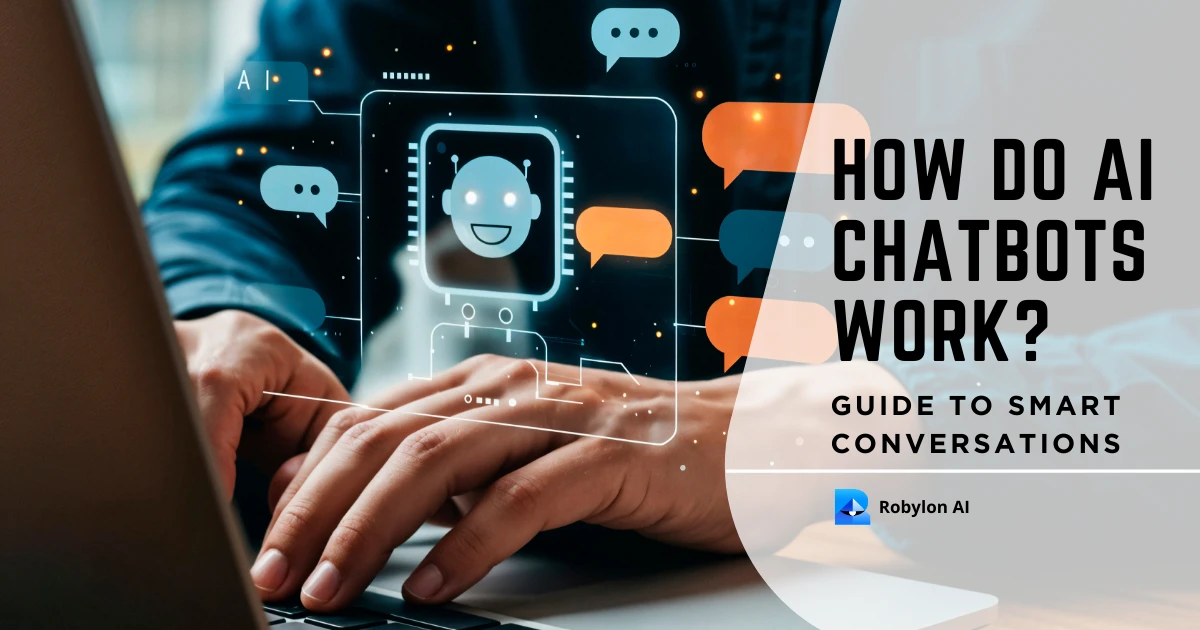

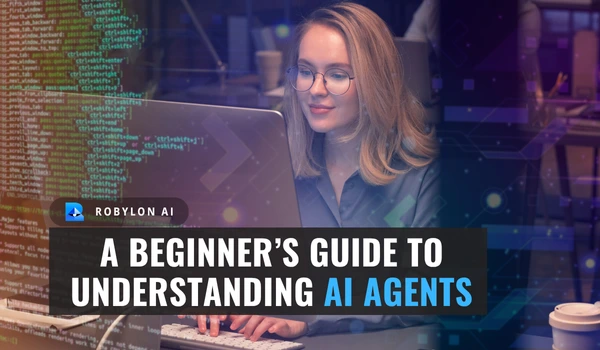
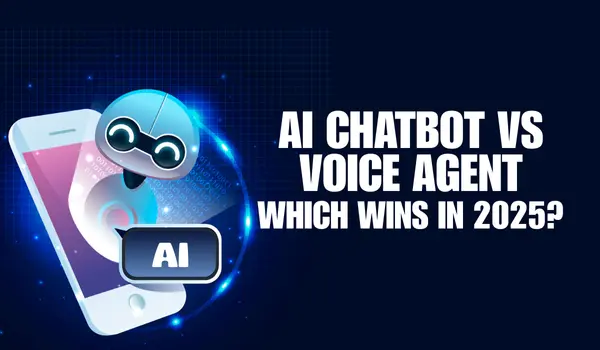
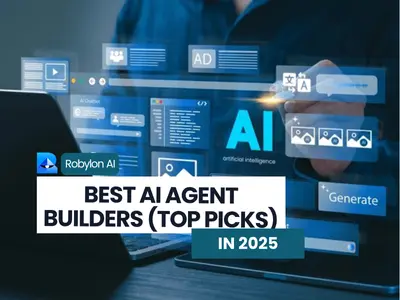

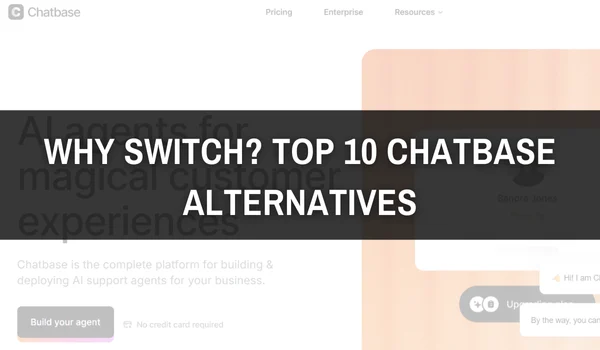
.png)
.webp)












